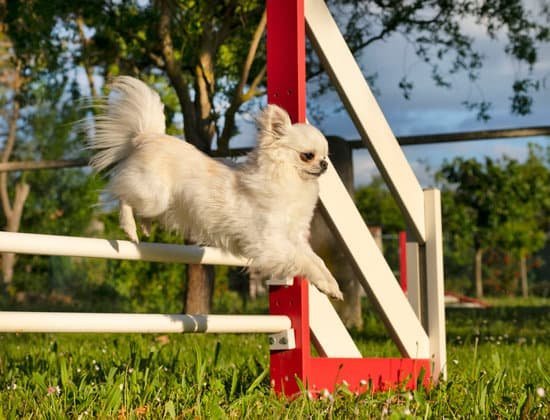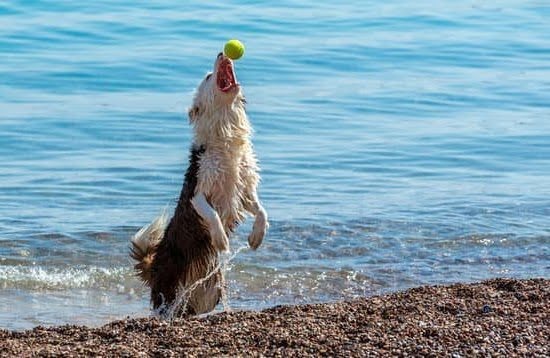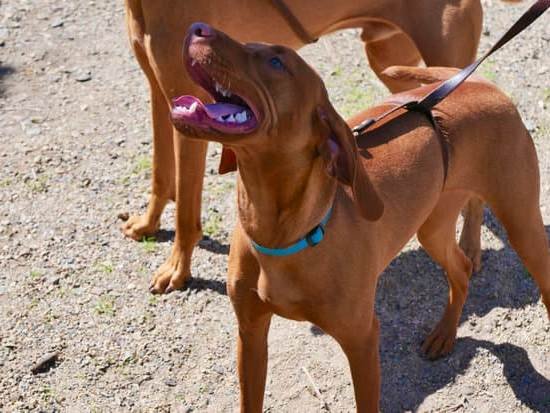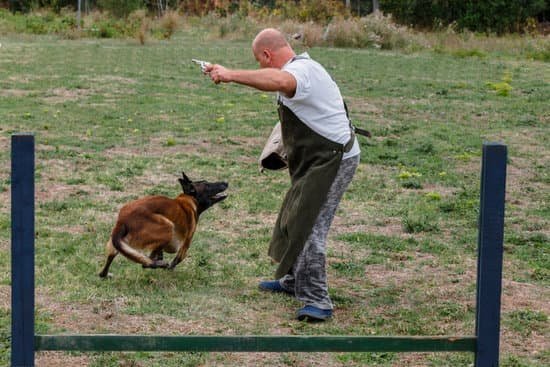Coyotes can pose a threat to both livestock and domestic pets, making it essential for dog owners to equip their furry companions with the skills needed to deter these wild predators. In this article, we will explore the comprehensive process of training a dog to effectively run coyotes. From understanding the dangers of coyotes to selecting the right breed for hunting, we will delve into the various aspects of preparing your dog for this specialized task.
Before delving into the specifics of training your dog, it is crucial to comprehend the potential risks posed by coyote encounters. By understanding their behavior and habits, you can effectively prepare your canine companion for navigating encounters with these elusive predators.
In this guide, we will cover all aspects of preparing and training your dog for coyote hunting, including selecting the right breed, basic obedience training techniques, advanced training methods, scent tracking skills, preparing for encounters with coyotes and other safety precautions. Whether you’re a seasoned hunter or a newcomer to this specialized form of training, this article aims to provide thorough guidance on cultivating your dog’s ability to run and deter coyotes effectively.
Selecting the Right Breed for Coyote Hunting
When it comes to training a dog to run coyotes, selecting the right breed is crucial. Not all dogs are suitable for this type of hunting, so it’s important to choose a breed that has the necessary characteristics and skills for coyote hunting. Some of the best breeds for coyote hunting include greyhounds, salukis, and American staghounds. These breeds are known for their agility, speed, endurance, and strong prey drive, making them ideal for chasing and capturing coyotes.
It’s important to consider the specific traits of each breed before choosing a hunting companion. For example, greyhounds are known for their incredible speed and agility, while salukis are known for their exceptional sight and scent tracking abilities. American staghounds are strong, agile, and have excellent stamina. Understanding these breed-specific traits will help you select the most suitable partner for coyote hunting based on your specific needs and preferences.
In addition to considering a breed’s natural abilities, it’s also important to take into account the dog’s individual temperament and training potential. A well-trained dog with a strong prey drive will be more successful in running down coyotes than an untrained or timid dog. Therefore, selecting a breed with a natural inclination towards hunting combined with proper training is essential for effective coyote hunting.
| Breed | Main Characteristics |
|---|---|
| Greyhound | Incredible speed and agility |
| Saluki | Exceptional sight and scent tracking abilities |
| American Staghound | Strong, agile, and excellent stamina |
Basic Obedience Training for Coyote Hunting
When you are training your dog to run coyotes, it is crucial to start with basic obedience training. This will lay the foundation for more advanced techniques later on. Here are some basic obedience training tips to help get your dog ready for coyote hunting:
- Start with simple commands such as sit, stay, and come. These commands will form the basis of your communication with your dog while out in the field.
- Use positive reinforcement techniques such as treats and praise to encourage your dog to follow commands. This will help create a strong bond between you and your dog, making them more responsive during hunting activities.
- Practice obedience training in different environments to ensure that your dog can follow commands regardless of the location or distractions present.
By incorporating these basic obedience training methods into your routine, you will be preparing your dog for more advanced coyote hunting techniques in the future. Remember that patience and consistency are key when it comes to obedience training, so be sure to dedicate time each day to work with your canine companion.
Advanced Training Techniques for Coyote Hunting
When training a dog to hunt coyotes, it’s essential to move beyond basic obedience and into advanced techniques. These methods will help your canine companion become a skilled and efficient coyote hunter. Here are some advanced training techniques to consider:
1. Agility Training: Agility training is crucial for hunting dogs, as it helps them navigate various terrains with ease. Incorporate agility exercises such as jumping, climbing, and weaving through obstacles into your dog’s training routine.
2. Distraction Training: Teaching your dog to focus on the task at hand despite distractions is vital for successful coyote hunting. Practice obedience commands in the presence of various distractions, gradually increasing the level of difficulty as your dog improves.
3. Mock Hunts: Simulate real hunting scenarios by setting up mock hunts for your dog. Use scent trails or decoys to mimic the presence of coyotes, allowing your dog to practice tracking and pursuing their target.
These advanced training techniques will enhance your dog’s skills and prepare them for the challenges of coyote hunting. Remember to be patient and consistent with the training process, as it may take time for your dog to master these advanced skills.
Scent Training and Tracking Skills
Understanding the Importance of Scent Training
Scent training is crucial for preparing your dog to run coyotes. Dogs have a powerful sense of smell, and this can be utilized for tracking down coyotes. By exposing your dog to different scents and teaching them to differentiate between them, you can enhance their tracking skills significantly. Understanding the importance of scent training will help you appreciate its role in preparing your dog for successful coyote hunting.
Implementing Scent Training Techniques
There are various techniques that you can use to train your dog in scent detection and tracking. One common method is to introduce your dog to the scent of coyotes by using items such as fur or urine from a coyote.
By creating games and exercises around identifying and following this scent, you can gradually build up your dog’s tracking skills. Additionally, utilizing scented training aids and equipment can further enhance their ability to track down coyotes in the wild.
Developing Tracking Skills Through Practice
Consistent practice is essential for developing your dog’s tracking skills. Once they have been introduced to the scent of coyotes, regular training sessions in various outdoor environments can help reinforce their ability to pick up and follow the scent trail effectively. Providing opportunities for your dog to practice their tracking skills in different terrains and conditions will prepare them for real-life hunting situations where they will need to rely on these abilities.
Introducing Your Dog to Coyote Encounters
When training your dog to run coyotes, it is important to introduce them to coyote encounters in a controlled and safe manner. This will help prepare them for the real situation when out in the field. Start by exposing your dog to coyote scents and sounds in a secure environment.
You can do this by playing audio recordings of coyote calls or introducing them to items with coyote scent on them. This will help familiarize your dog with the smell and sound of coyotes.
Once your dog is comfortable with the scents and sounds, you can gradually progress to more realistic scenarios. Consider seeking the help of a professional trainer who has experience working with hunting dogs and coyote encounters. They can assist you in setting up simulated encounters that mimic real-life situations, allowing your dog to practice their response in a safe and controlled environment.
It is crucial to remain patient throughout this process and pay attention to your dog’s behavior and reactions. Some dogs may take longer to acclimate to coyote encounters, so it’s essential to move at a pace that is comfortable for them. By properly introducing your dog to coyote encounters, you are equipping them with the necessary skills and confidence to navigate these situations effectively while out hunting.
| Training Tips | Additional Notes |
|---|---|
| Start with scents and sounds | Gradual exposure is key |
| Seek professional assistance | A trainer can provide valuable guidance |
| Be patient and observant | Each dog will acclimate at their own pace |
Safety Precautions and Gear for Coyote Hunting
When training a dog to run coyotes, safety is of utmost importance for both the dog and the owner. Coyote hunting can present various risks to your dog, such as injuries from chasing or encountering the coyotes themselves. Therefore, it is essential to take necessary precautions and invest in the right gear to ensure a safe and successful hunting experience.
One crucial safety precaution for coyote hunting is outfitting your dog with protective gear. This includes using a sturdy, well-fitted collar with identification tags in case your dog accidentally gets separated from you during the hunt. Additionally, consider using specialized vests or chest protectors that can shield your dog from potential injuries and bites while confronting a coyote. These protective gears are especially important for breeds that are smaller in size and more susceptible to harm during a hunt.
In addition to gear, it’s important to equip yourself with the right tools to ensure safety during coyote hunting with your dog. Always carry a first-aid kit containing essentials like bandages, antiseptic wipes, and tweezers in case of any injuries sustained by your dog while out in the field. It’s also advised to carry pepper spray or an air horn to deter aggressive coyotes if necessary.
Furthermore, always be mindful of local hunting regulations and make sure you have any required permits or licenses before venturing out with your hunting dog. Taking these safety precautions will help minimize risks and ensure a safe coyote hunting experience for both you and your canine companion.
Tips for Enhancing Your Dog’s Stamina and Endurance
Conditioning and Exercise
To prepare your dog for coyote hunting, it is essential to focus on building their stamina and endurance. This can be achieved through regular physical conditioning and exercise. Long walks, jogs, and hikes are great ways to build up your dog’s endurance. Incorporating activities such as swimming or agility training can also help improve their overall physical fitness.
Diet and Nutrition
In addition to physical exercise, providing your dog with a proper diet and nutrition is crucial for enhancing their stamina and endurance. A well-balanced diet that includes high-quality protein, essential fatty acids, and complex carbohydrates will help support your dog’s energy levels during hunting activities. It is important to consult with a veterinarian to ensure that your dog is receiving the appropriate nutrients for their specific needs.
Gradual Progression
When building up your dog’s stamina and endurance for coyote hunting, it is important to progress gradually to avoid overexertion or injury. Start with shorter hunting sessions and gradually increase the duration as your dog becomes more conditioned. Pay close attention to their behavior and physical response during training sessions, making adjustments as necessary to avoid pushing them too hard too quickly.
Maintaining the Health and Well-Being of Your Hunting Dog
In conclusion, while training your dog to run coyotes can be a thrilling and rewarding experience, it is crucial to prioritize the health and well-being of your hunting companion. Regular exercise, proper nutrition, and regular veterinary check-ups are essential for maintaining a healthy hunting dog. Additionally, it is important to monitor your dog for any signs of exhaustion, injury, or illness during and after coyote hunting outings.
Beyond physical health, it is also important to consider the mental well-being of your hunting dog. Spending time with your dog outside of hunting activities, providing mental stimulation through interactive play and training sessions, and ensuring a safe and comfortable living environment are all important factors in maintaining the overall well-being of your dog.
Finally, as a responsible owner and hunter, it is important to stay informed about local regulations and best practices for coyote hunting. This includes obtaining the necessary permits if required, respecting wildlife conservation efforts, and being mindful of potential risks to both your dog and other wildlife.
By prioritizing the health and well-being of your hunting dog throughout the training process and during coyote encounters, you can ensure a fulfilling and safe experience for both you and your canine companion.
Frequently Asked Questions
How Do You Train a Dog to Use a Coyote?
Training a dog to use a coyote is a complex process that requires patience, consistency, and positive reinforcement. It involves teaching the dog to recognize and respond to the scent of coyotes, as well as providing basic obedience training.
Using reward-based methods, such as treats and praise, can help the dog understand what is expected of them when working with a coyote.
What Is the Best Dog to Run Coyotes With?
The best dog to run coyotes with is typically a sighthound breed, such as the greyhound or saluki. These dogs are known for their speed, agility, and keen eyesight, making them well-suited for chasing and hunting coyotes. It’s important to consider the individual dog’s temperament and training when determining their suitability for running coyotes.
Can Dogs Run With Coyotes?
While some dogs have been trained to run with coyotes for hunting or wildlife management purposes, it is generally not recommended for pet dogs to run with wild animals like coyotes. Wild animals can pose a danger to domestic pets, and it’s important to prioritize their safety.
Instead of running with coyotes, pet dogs should engage in safe and supervised activities that are appropriate for their breed and behavior.

Welcome to the blog! I am a professional dog trainer and have been working with dogs for many years. In this blog, I will be discussing various topics related to dog training, including tips, tricks, and advice. I hope you find this information helpful and informative. Thanks for reading!





